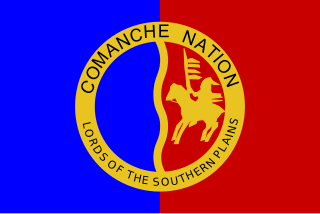
The Comanche or Nʉmʉnʉʉ is a Native American tribe from the Southern Plains of the present-day United States. Comanche people today belong to the federally recognized Comanche Nation, headquartered in Lawton, Oklahoma.
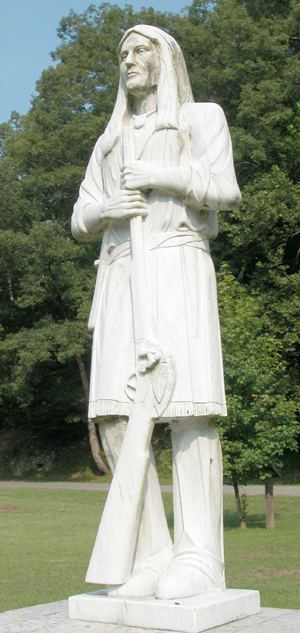
Logan the Orator was a Cayuga orator and war leader born of one of the Six Nations of the Haudenosaunee Confederacy. After his 1760s move to the Ohio Country, he became affiliated with the Mingo, a tribe formed from Seneca, Cayuga, Lenape and other remnant peoples. He took revenge for family members killed by Virginian long knives in 1774 in what is known as the Yellow Creek Massacre. His actions against settlers on the frontier helped spark Dunmore's War later that year.
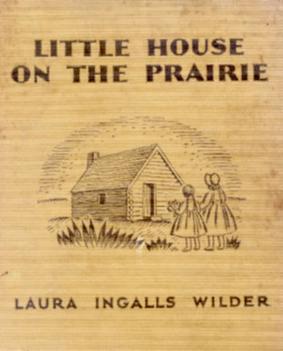
The Little House on the Prairie books comprise a series of American children's novels written by Laura Ingalls Wilder. The stories are based on her childhood and adulthood in the American Midwest between 1872 and 1894. Eight of the novels were completed by Wilder, and published by Harper & Brothers in the 1930s and 1940s, during her lifetime. The name "Little House" appears in the first and third novels in the series, while the third is identically titled Little House on the Prairie. The second novel, meanwhile, was about her husband's childhood.

A mountain man is an explorer who lives in the wilderness and makes his living from hunting and trapping. Mountain men were most common in the North American Rocky Mountains from about 1810 through to the 1880s. They were instrumental in opening up the various emigrant trails allowing Americans in the east to settle the new territories of the far west by organized wagon trains traveling over roads explored and in many cases, physically improved by the mountain men and the big fur companies, originally to serve the mule train-based inland fur trade.
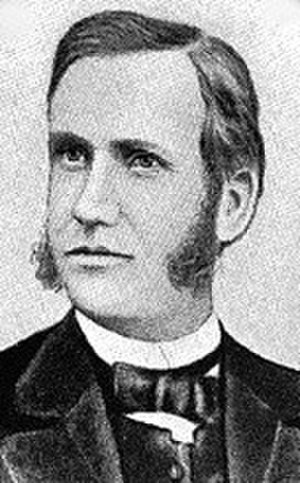
Marcus Whitman was an American physician and missionary. He is most well-known for leading American settlers across the Oregon Trail, unsuccessfully attempting to Christianize the Cayuse Indians, and was subsequently killed by the Cayuse Indians in a event known as the 1847 Whitman massacre, over a misunderstanding, resulting in the beginning of the Cayuse war (1847-1855).

Steens Mountain is a large fault-block mountain in the northwest United States, located in Harney County, Oregon. Stretching some fifty miles (80 km) north to south, on its west side it rises from the Alvord Desert at an elevation of about 4,200 feet (1,280 m) to 9,738 feet (2,968 m) at the summit. Steens Mountain is not part of a mountain range but is properly a single mountain, the largest of Oregon's fault-block mountains.

William Weatherford, also known after his death as Red Eagle, was a Creek chief of the Upper Creek towns who led many of the Red Sticks actions in the Creek War (1813–1814) against Lower Creek towns and against allied forces of the United States.
Brown's Park or Browns Park, originally called Brown's Hole, is an isolated mountain valley along the Green River in Moffat County, Colorado and Daggett County, Utah in the United States. The valley begins in far eastern Utah, approximately 25 miles (40 km) downstream from Flaming Gorge Dam, and follows the river downstream into Colorado, ending at the Gates of Lodore in Dinosaur National Monument. Known as a haven for outlaws such as Butch Cassidy and Tom Horn during the late 19th century and the early 20th century, it is now the location of the Browns Park National Wildlife Refuge. It was also the birthplace of Ann Bassett. She and her sister, Josie Bassett, were considered female outlaws and girlfriends to several of Cassidy's Wild Bunch gang. It is the location of John Jarvie Historic Ranch, where, in 1880, Scotsman John Jarvie built a ranch along the Green River.
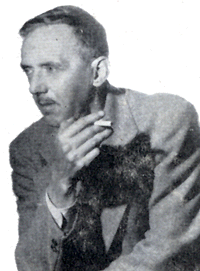
Harold Lenoir Davis, also known as H. L. Davis, was an American novelist and poet. A native of Oregon, he won the Pulitzer Prize for his novel Honey in the Horn, the only Pulitzer Prize for Literature given to a native Oregonian. Later living in California and Texas, he also wrote short stories for magazines such as The Saturday Evening Post.
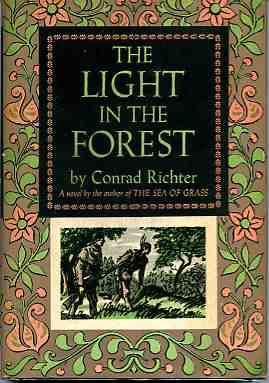
The Light in the Forest is a novel first published in 1953 by U.S. author Conrad Richter. Though it is a work of fiction and primarily features fictional characters, the novel incorporates historic figures and is based in historical fact related to the mid-1700s in colonial America.

John Tanner, known also by his Ojibwe name Shaw-shaw-wa-ne-ba-se, was captured by Odawa Indians as a child after his family had homesteaded on the Ohio River in present-day Kentucky. He grew up among the Odawa and Ojibwe nations, becoming fully acculturated and learning the Saulteaux language. He married an Ojibwe woman, served as a guide for European fur traders, and worked as an interpreter. His story of life with the Ojibwe was published in 1830. Titled A Narrative of the Captivity and Adventures of John Tanner, it was a popular success and remains an important historical record.

The Prairie: A Tale (1827) is a novel by James Fenimore Cooper, the third novel written by him featuring Natty Bumppo. His fictitious frontier hero Bumppo is never called by his name, but is instead referred to as "the trapper" or "the old man". Chronologically The Prairie is the fifth and final installment of the Leatherstocking Tales, though it was published before The Pathfinder (1840) and The Deerslayer (1841). It depicts Natty in the final year of his life, still proving helpful to people in distress on the American frontier. The book frequently references characters and events from the two books previously published in the Leatherstocking Tales as well as the two which Cooper would not write for more than ten years. Continuity with The Last of the Mohicans is indicated by the appearance of the grandson of Duncan and Alice Heyward, as well as the noble Pawnee chief Hard Heart, whose name is English for the French nickname for the Delaware, le Coeur-dur.
William Plutarch Vandevert was a western adventurer, cattleman, and Central Oregon pioneer. After travels in California, Texas, and Arizona, he established a cattle ranch fifteen miles (24 km) south of present-day Bend, Oregon, before the founding of Bend or the surrounding Deschutes County. He blazed trails through the Cascade Mountains and was a renowned bear hunter. He fathered eight children, including three doctors, and was a leading citizen of Central Oregon for many years.

Bridge of Clay is a 2018 novel by Australian author Markus Zusak. It revolves around five brothers coming to terms with the disappearance of their father.
John Watts, also known as Young Tassel, was one of the leaders of the Chickamauga Cherokee during the Cherokee–American wars. Watts became particularly active in the fighting after frontiersmen murdered his uncle, Old Tassel (1708–1788), in 1788.

Little House on the Prairie is an autobiographical children's novel by Laura Ingalls Wilder, published in 1935. It was the third novel published in the Little House series, continuing the story of the first, Little House in the Big Woods (1932), but not related to the second. Thus, it is sometimes called the second one in the series, or the second volume of "the Laura Years".

Wanderer of the Wasteland is a 1945 American Western film directed by Wallace Grissell and Edward Killy and starring James Warren in his RKO debut replacing Robert Mitchum who had starred in Nevada and West of the Pecos from the same screenwriter and director. Richard Martin, and Audrey Long also star in the film. The screenplay was written by Norman Houston loosely based on the 1923 novel Wanderer of the Wasteland by Zane Grey, the film is about a young cowboy searching for the man who killed his father when he was a boy. With his lifelong friend at his side, he travels the country following his one clue—a distinctive brand on the killer's horse. When he tracks down the now elderly murderer, he finds he cannot kill him because of his feelings for the man's kindhearted daughter. Wanderer of the Wasteland was filmed on location in Lone Pine, California. Produced by RKO Radio Pictures, the film was released on September 28, 1945 in the United States.

Indian Horse is a novel by Canadian writer Richard Wagamese, published by Douglas & McIntyre in 2012. The novel centres on Saul Indian Horse, a First Nations boy who survives the residential school system and becomes a talented ice hockey player, only for his past traumas to resurface in his adulthood.

Man's Size is a 1923 American silent drama film directed by Howard M. Mitchell and starring William Russell, Alma Bennett, and Stanton Heck. It is based upon the novel Man Size by William MacLeod Raine.

Cyclone of the Saddle is a 1935 American Western film directed by Elmer Clifton, starring Rex Lease, Janet Chandler, Bobby Nelson, and Yakima Canutt.



















